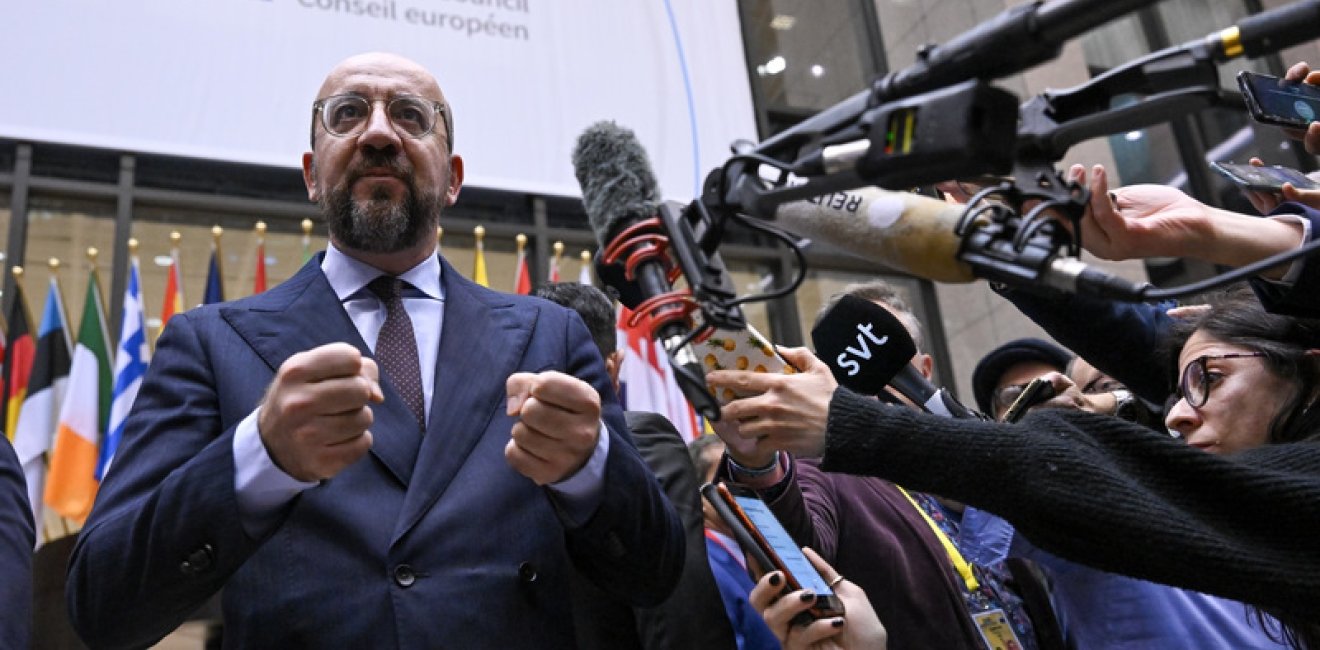Ukraine in Europe: One Hard-Earned Step Closer
As Ukraine takes another step on it’s path to an EU membership, this article explores the progress from the EuroMaidan protests to opening membership negotiations with the EU.
As Ukraine takes another step on it’s path to an EU membership, this article explores the progress from the EuroMaidan protests to opening membership negotiations with the EU.

On December 14, 2023, the European Council adopted an historic decision to open membership negotiations with Ukraine and Moldova, and to grant candidate status to Georgia. All three nations were once part of the Soviet empire, all three share the ill-fortune to live next to Russia, a belligerent nuclear-armed state that sees them as instrumental in reconstructing its imperial past. All three have followed a long and arduous path toward European integration. Of the three, however, Ukraine is paying the most exorbitant price, in blood and treasure, for its European choice.
That the war currently ravaging Ukraine is about the defense of this country’s European future is no exaggeration. Ukraine’s struggle for Europe started ten years ago, on November 21, 2013, when Ukrainian youth gathered on the Maidan, Kyiv’s central square, to protest the refusal of then-president Viktor Yanukovych to sign the Association Agreement between Ukraine and the European Union, scheduled to take place on November 29 that year in Vilnius, Lithuania. Yanukovych did so under the pressure of Russian President Vladimir Putin, who also sought to bribe the Ukrainian leadership with a $17 billion loan and cheaper gas prices. As it turned out, not only the Ukrainian students, but most of the Ukrainian population would not accept the Yanukovych-Putin plan.
Two weeks into the EuroMaidan protests, the Yanukovych regime decided to break up protests, unleashing riot police and their batons on the students. This was the first time the state used violence against unarmed, peaceful protesters since Ukraine became an independent state in 1991. The massive surge of popular indignation that followed was in itself a testament to the kind of state Ukrainians wanted to live in and the kind of governance they deemed unacceptable.
For the millions of Ukrainians who in the winter of 2014 came out in protest across the nation, for the thousands who build and defended a make-shift encampment on the Maidan, and for the hundred, the Heavenly Hundred, who would lay their lives in what became the Revolution of Dignity, “Europe” was not an ephemeral notion, not even a reference to a shared cultural past, but a very tangible, conscious choice about the future.

Europe meant the freedom to assembly, speech, and expression. Europe meant the freedom from arbitrary state violence. Europe meant that the nation’s political and economic elites are accountable and prevented from growing shamelessly fat on state graft. Europe meant the rule of law and a recourse to justice. Europe meant responsible husbanding of the nation’s resources, clean water and air, and sustainable energy. Europe meant agency and options in shaping one’s future. Europe meant synergy and cooperation, not a zero-sum game. Europe meant living in prosperity, yes, but most importantly, living in dignity.
It means all this still and so much more, now that the price Ukrainians paid and continue to pay for their European choice proved so dear. In February 2014, the stand-off between protesters and the Yanukovych regime on the Maidan culminated in Russian-backed sniper shootings of the protesters, a blood-red line that even Yanukovych’s domestic allies thought he ought not to have crossed, eventually causing the president to abdicate by fleeing to Russia. On March 21, 2014, Ukraine’s new government signed the Association Agreement with the EU; the Agreement would go into full effect on November 1, 2017.
Meanwhile, Russia took advantage of Ukraine’s internal upheaval and political transition to stealthily occupy and illegally annex Ukraine’s peninsular of Crimea in March 2014. It proceeded to not-so-stealthily ignite a war in the Donbas in Ukraine’s east. The first undeclared interstate war between Ukraine and Russia – complete with artillery battles, encirclements, and sieges, and resulting in thousands of military and civilian casualties, millions of internally displaces people – was now afoot. Most observers in Ukraine and beyond interpreted Russia’s behavior as an opportunistic land-grab and a ploy to destabilize Ukraine that is bound to stay limited and confined to Ukraine’s east.
That proved wrong: Putin’s Russia was not after another bit of territory to add to its giant landmass. Ukraine’s Crimea and Donbas in 2014, like Georgia before them in 2008, were first, explicit shots in Russia’s multi-year multi-domain war against Europe and everything it stands for. Russia’s is the project of domination that seeks to subvert, subjugate, and ultimately supplant Europe’s project of cooperation and integration. The final confirmation of this came in the small hours on February 24, 2022, with the roar of Russian tanks and missiles across the Ukrainian boarders and airspace. Four days later, in a bold and highly symbolic move, Ukraine’s President Volodymyr Zelensky, signed Ukraine’s application for membership in the European Union.
Since then, Ukraine not only managed to survive as an independent state in the face of a militarily and economically superior enemy, but also to push the Russian invaders from large swaths of its territory and hold firm against unending Russian offensives and missile barrages. On top of all that, Ukraine – its leaders and its civil society – has been hard at work to put its own house in much-needed good order: continue to eradicate graft, adopt reform legislation, and persevere economically.
War never stops at the border, especially on a continent like Europe. The European Union absorbed millions of Ukrainian war refugees and poured billions of euros into Ukraine’s defenses and economic survival. The war permanently reshaped Europe: its demographics, political economy, and energy architecture are shifting in ways that will have irreversible long-term consequences. All of this is because in a very real sense Ukraine already is inextricably woven into the fabric of Europe: Ukraine’s pain is Europe’s pain and Ukraine’s gain will inevitably be Europe’s gain, too.
But Europe also is not confined to specific borders. More than a geographic area, Europe is an idea and an ideal that represents a way of life, based not only, not even primarily, on a common cultural past, but rather on shared values and mutual commitments toward the future, a future based on dignity and respect among nations and people and the environment they inhabit. Ukrainians have fought many demons, domestic and foreign, to align their country and their way of life with these ideals. The fight is far from over and the hardest battles are likely still ahead. But the European Council’s December 14 decision to begin membership negotiations with Ukraine is both an acknowledgement of the country’s efforts and sacrifices for the sake of its European aspirations and an opening of a new chapter not only for Ukraine but for a new and transformed Europe.


The Global Europe Program is focused on Europe’s capabilities, and how it engages on critical global issues. We investigate European approaches to critical global issues. We examine Europe’s relations with Russia and Eurasia, China and the Indo-Pacific, the Middle East and Africa. Our initiatives include “Ukraine in Europe”—an examination of what it will take to make Ukraine’s European future a reality. But we also examine the role of NATO, the European Union and the OSCE, Europe’s energy security, transatlantic trade disputes, and challenges to democracy. The Global Europe Program’s staff, scholars-in-residence, and Global Fellows participate in seminars, policy study groups, and international conferences to provide analytical recommendations to policy makers and the media. Read more
